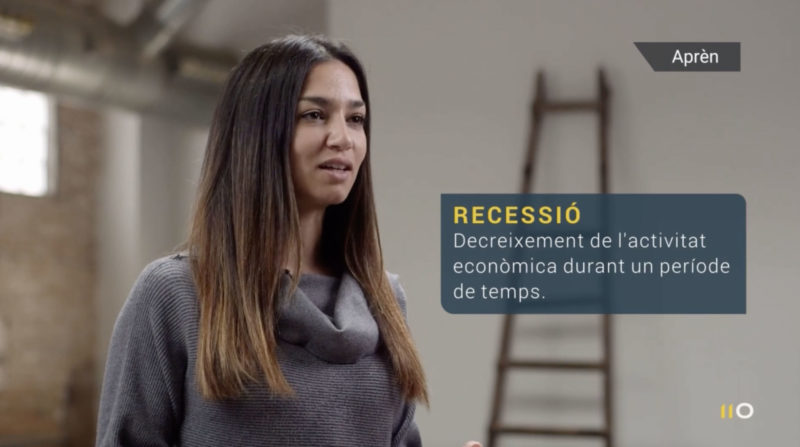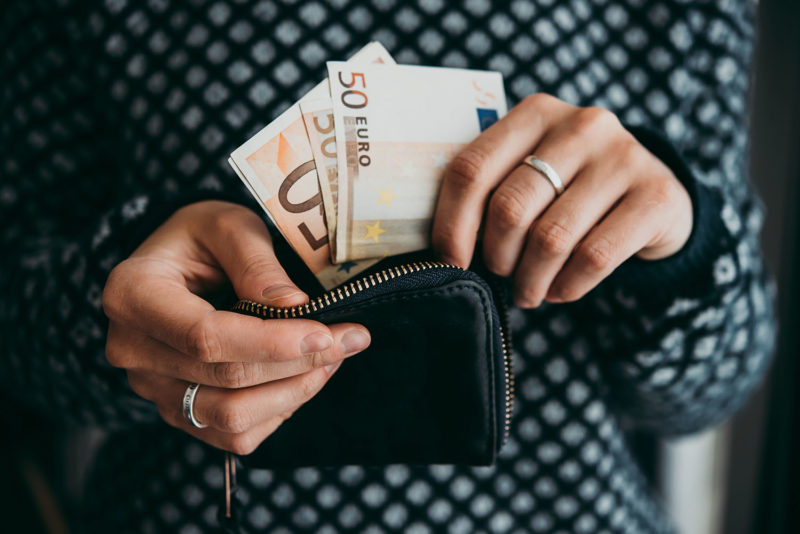

Is this the end of the age of plenty?
On one side of the Atlantic, French President, Emmanuel Macron, claims that “we are living the end of abundance”. Across the ocean, US Federal Reserve Chairman, Jerome Powell, warns that the fight against inflation will be “painful” for families and businesses. And beyond words, more and more data point to a “major upheaval”.
On the first council of ministers held after the holidays, Emmanuel Macron warned that France is facing a “turning point” that will require “sacrifices”. The French President was very explicit when he stated that “we are witnessing a great upheaval, a radical change”. He concluded that, in essence, “what we are experiencing is the end of abundance”.
The current economic system seems exhausted, with the uncontrolled printing of money by central banks in recent years. However, leaders such as Macron continue to point to more conjunctural issues, such as the war in Ukraine or droughts caused by climate change, as being responsible for the crisis.
The “sacrifices” demanded by Macron have already provoked trade union rejection in a country that does not hesitate to mobilise to defend its rights. Philippe Martinez, leader of the CGT, warned that there will be protests in September to demand wage increases and control inflation. And it is logical that social conflict will tend to intensify in the face of probable cuts in the pension and unemployment benefit systems, which are in the process of being reformed in France.
Messages to prepare the ground
On the other side of the Atlantic, the chairman of the Federal Reserve also acknowledged shortly afterwards that restoring price stability will bring “problems for households and businesses”. Jerome Powell admitted that controlling inflation “will take some time” and will involve growth “below” estimates.
This is a very optimistic forecast, as many economists have stopped talking about slowing growth to assume a recession scenario. In fact, after raising interest rates in the United States by 0.75% in July, another unusually large increase is expected in September. And the move will further strangle the economy.
Papal urgencies
In this context of rising interest rates, which promises more economic difficulties, some moves come as no surprise. For example, the Pope has just ordered all the organs of the Holy See to transfer their financial assets to the Institute for Works of Religion (IWR), better known as the Vatican bank.
And they must do so in haste, according to the papal request: “The Holy See and the institutions linked to the Holy See that hold financial assets and liquid assets (…) in financial Institutions other than the IWR must inform the IWR and transfer them to the IWR as soon as possible within 30 days from 1 September 2022”.
Why such a rush? The Vatican bank acknowledged in the latest annual report, published in June, a net profit of about 19 million euros in 2021. This is less than half of what it achieved in the previous two years. And the figures could be even worse so far in 2022. The Pope’s request is therefore interpreted as a desperate attempt to consolidate the IOR’s accounts before the crisis worsens.
Central banks continue to accumulate gold
At the same time, central banks continue to stockpile gold to protect themselves from a sovereign debt crisis. Buying activity was particularly intense in July, when the price of gold fell below 1,700 euros per ounce.
During that month, Qatar‘s central bank increased its reserves by 14.8 tonnes and Uzbekistan‘s central bank bought 8.7 tonnes, according to Krishan Gopaul, an analyst at the World Gold Council. In the case of the Qatari state, this is the largest monthly increase in reserves since records began. In the case of Uzbekistan, the data confirms its buying strategy, as it is a similar volume to what it had acquired in the previous month.
In recent months, the price of gold has been affected by the increase in interest rates decreed by many central banks, which has boosted the investment attractiveness of deposits. However, despite these headwinds, many analysts maintain bullish forecasts for the precious metal in the long term, with estimates placing the price of gold at over 3,000 euros per ounce.
Central banks want the end of the era of abundance predicted by Macron to catch them with gold deposits bursting at the seams.
If you want to discover the best option to protect your savings, enter Preciosos 11Onze. We will help you buy at the best price the safe-haven asset par excellence: physical gold.
Leave a Reply
You must be logged in to post a comment.





Gràcies
Caldrà tenir els ulls ben oberts i els estalvis ben vigilats potser convertir-los en or…?
És una molt bona idea. Moltes gràcies pel teu comentari, Francesc!!!
Els auguris no són gens bons, però veurem com es van desenvolupant els aconteixements.
Gràcies per ser-hi
Cert, ara veurem cap a on anirà tirant tot plegat un cop deixem enrere les vacances d’estiu. Pot esdevenir una tardor i un hivern ben durs. Moltes gràcies pel teu comentari, Manel!!!
Poc a poc anirem veient les veritats i sobretot les mentires. Estarem preparats. Gràcies equip d’onze!
Com diuen, les cames curtes tenen les mentides….. gràcies, Jordi.
Al Vaticà saben molt, és la gran escola de la Diplomàcia. Per a tenir en compte.
Millor no dir res més, en boca tancada no entren mosques… Moltes gràcies pel teu comentari, Mercè!!!